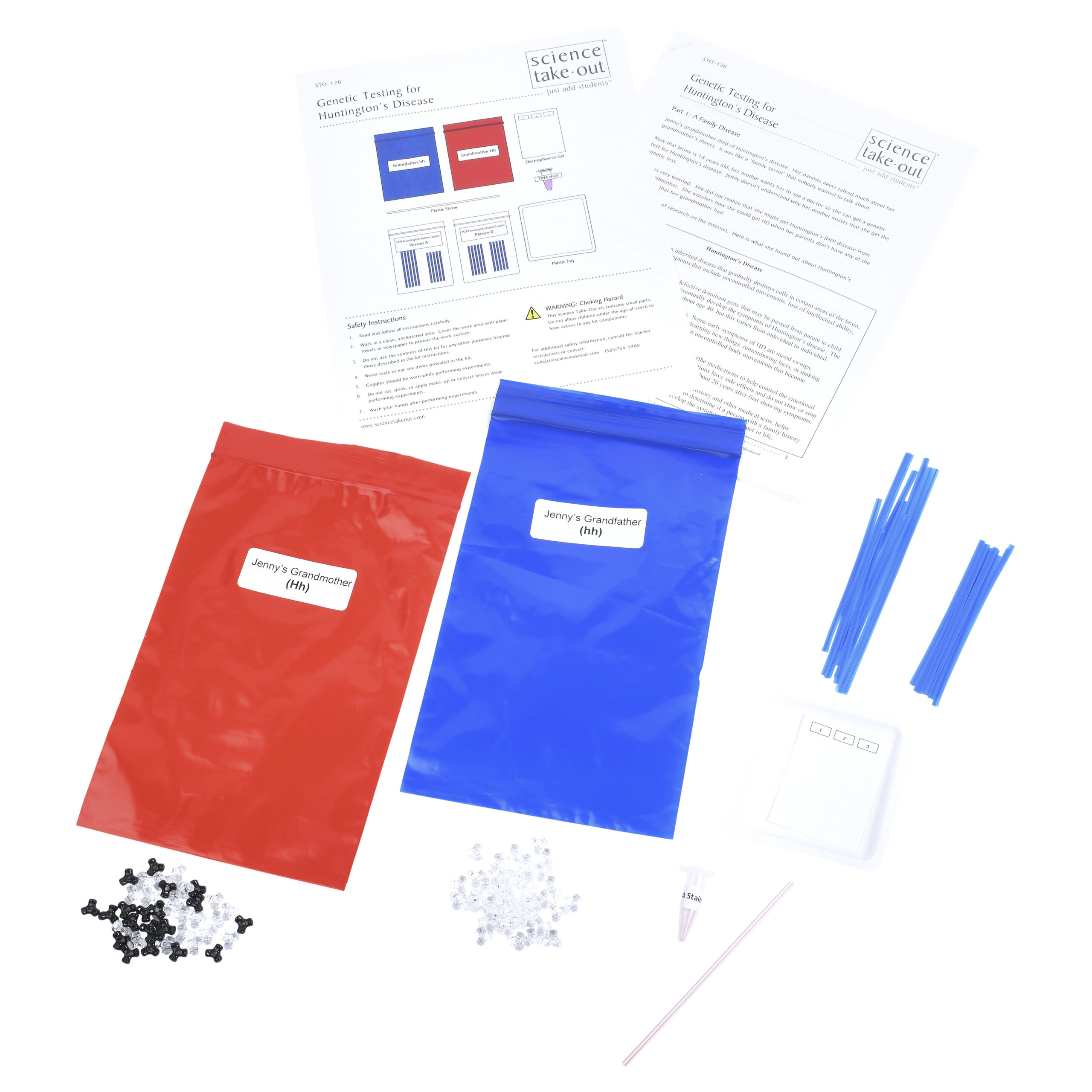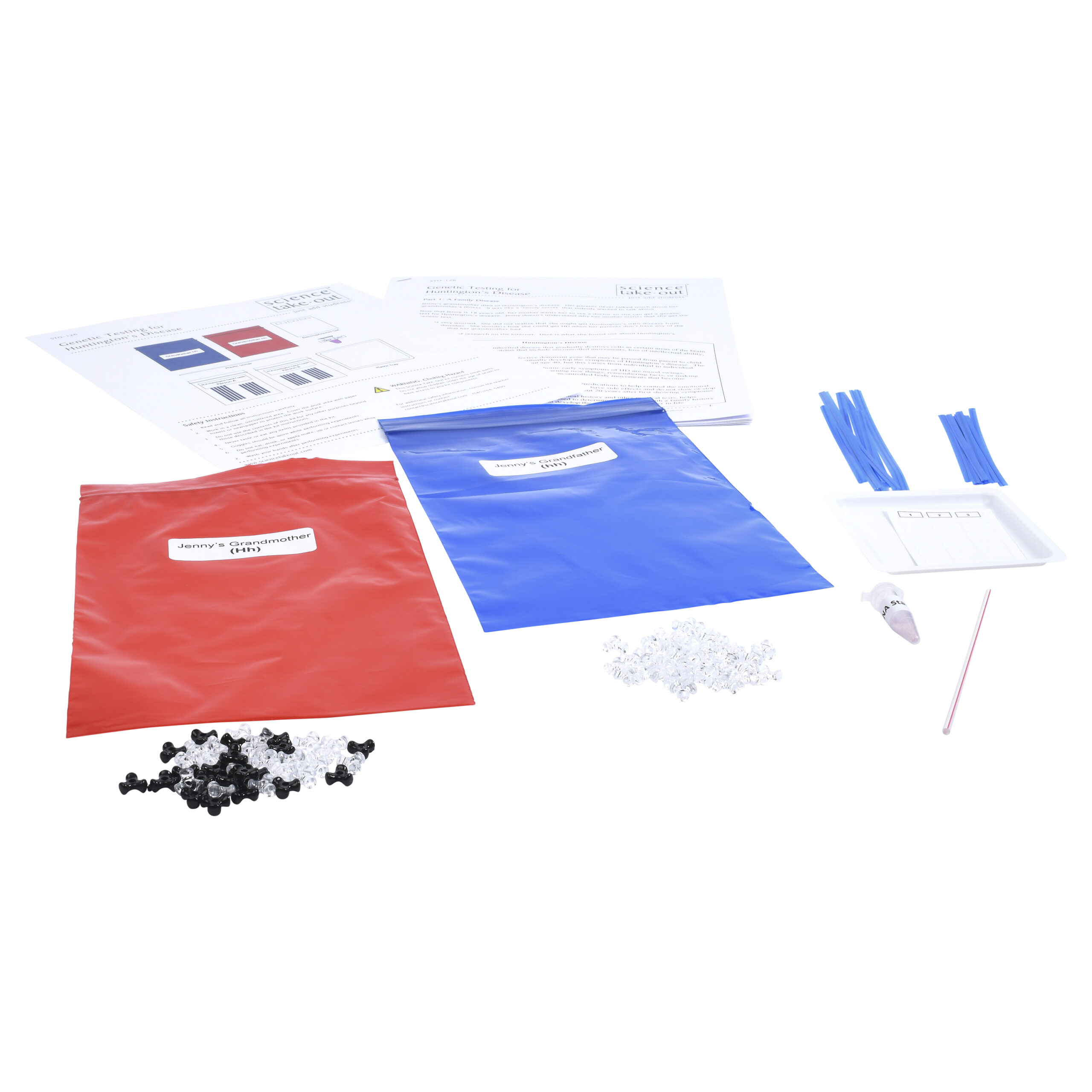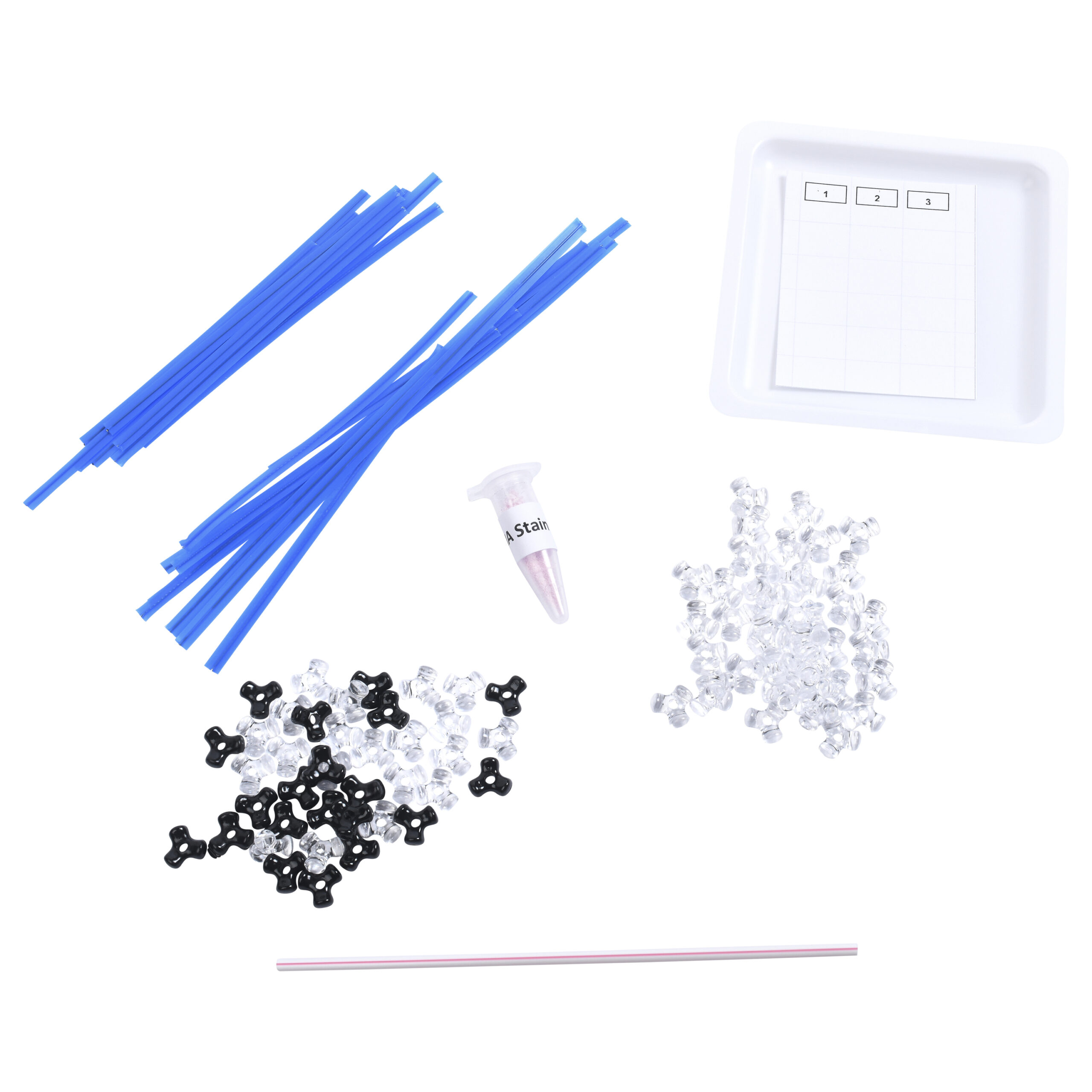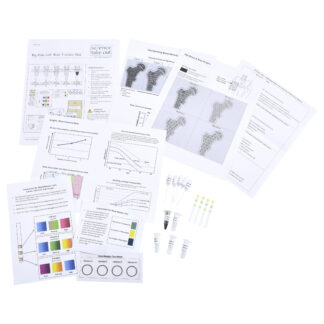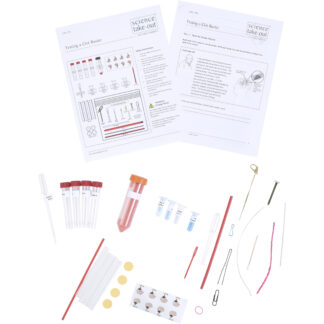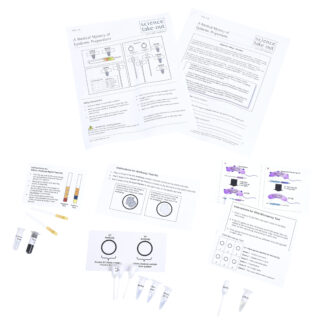Genetic Testing for Huntington’s Disease
$16.95 – $100.95
Should Jenny get tested for Huntington’s disease?
Jenny is a young woman with a family history of Huntington’s disease (an inherited disease caused by a defective dominant gene). In this multi-part activity, students:
- Use models and pedigrees to understand the chances of inheriting the gene for Huntington’s disease.
- Weigh benefits and risks of genetic testing.
- Perform a simulated genetic test to determine if Jenny or other family members have inherited the gene for Huntington’s disease.
Kit Includes
- Student instructions
- 1 bag of beads labeled “Grandmother Hh”
- 1 bag of beads labeled “Grandfather hh”
- 1 bag of “PCR Huntington Gene Copies – Person A”
- 1 bag of “PCR Huntington Gene Copies – Person B”
- 1 simulated “Electrophoresis Gel”
- 1 tube of “DNA Stain”
- 1 stirrer
- 1 plastic tray for staining the gel
Also Required
- Water
- 2 different colored pens, pencils, or markers
- Safety goggles
Quantity Discounts
Kits:
- 1 – 9 kits: $16.95 each
- 10 – 24 kits: $16.10 each
- 25+ kits: $15.26 each
Unassembled:
- 1 – 9 packs: $100.95 each
- 10+ packs: $95.90 each
Refills:
- 1 – 9 packs: $38.95 each
- 10+ packs: $37.00 each
Correlation to Next Generation Science Standards (NGSS) Shop by NGSS »
Performance Expectations:
MS-LS3-2. Develop and use a model to describe why asexual reproduction results in offspring with identical genetic information and sexual reproduction results in offspring with genetic variation.
Science & Engineering Practices
Developing and Using Models - Develop and use a model to describe phenomena.
Disciplinary Core Ideas
LS1.B: Growth and Development of Organisms - Organisms reproduce, either sexually or asexually, and transfer their genetic information to their offspring.
LS3.A: Inheritance of Traits - Variations of inherited traits between parent and offspring arise from genetic differences that result from the subset of chromosomes (and therefore genes) inherited.
LS3.B: Variation of Traits - In sexually reproducing organisms, each parent contributes half of the genes acquired (at random) by the offspring. Individuals have two of each chromosome and hence two alleles of each gene, one acquired from each parent. These versions may be identical or may differ from each other.
Crosscutting Concepts
Cause and Effect - Cause and effect relationships may be used to predict phenomena in natural systems.
